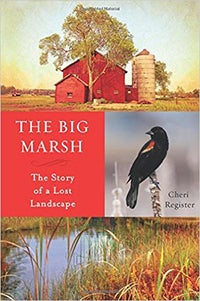Environmental book ‘Big Marsh’ by A.L. native a real page-turner
Published 9:00 am Sunday, May 15, 2016
Book review by Al Batt
In her book “The Big Marsh: The Story of a Lost Landscape,” Cheri Register weaves a tapestry of stories based upon historical and family accounts. It’s an environmental history told from a personal point of view written by the author of the award-winning “Packinghouse Daughter,” a memoir of growing up in Albert Lea when the Wilson’s meatpacking plant was a dominant presence. Register is a graduate of Albert Lea High School.
Freeborn County had 154,000 acres of “swamp, wet and overflowed” lands at the time of the European settlement. This book recounts the drainage of an 18,000-acre wetland. It states the enduring value of wild places and the importance of preserving them.
I grew up along Mule Lake, another Freeborn County wetland that had been drained. About 350 miles of public drainage ditches in Freeborn County work to keep such places farmable.
“The Big Marsh” is a book of dreams and schemes. Men who wished for change and those who hoped to preserve. Things changed forever when moneyed interests conspired to transform wetlands into farmland. This big marsh was important to hunters, trappers and fishermen. Woods and plants were harvested. A Minneapolis land developer, an Illinois banker and a lovelorn local lawyer worked together to bring about the drainage at public expense. Farmland prices had risen and dry land was worth more than land under water. Drained soil rich in organic matter made for fertile farmland. Register’s great-grandfather was critical of the drainage and left clues that the author followed.
Surveyors had described the wetland as an impossible marsh, but men found a way to keep the water flowing downhill. Not a drop was to be left undrained.
I read it in one sitting, which means that I found it a page-turner. I admit that the familiar places and names demanded my attention. The book mentioned two of my heroes. Owen Johnson of Albert Lea who collected 28,000 Native American artifacts in the area and Bill Bryson of Alden who fought hard and long to preserve a marsh. Beauty is in the eye of the beholder and I’m beholden to Johnson, Bryson and Register for reminding me to look.
Is there another side to the story? Of course. There are many, but Cheri Register did a fine job telling the tale. Whether you enjoy having wet feet or not, this book will not disappoint. It ended too soon. I wanted to read more.
One passage from the book sticks in my mind. Register wrote, “Two birds call to me: one sings a melody; the other trills the same line again and again. They will forever be the sounds of home.”
The western meadowlark was a sound of my home. Changing habitat has thinned that flock, but if I close my eyes and remember hard, I can hear the song of the meadowlark in places where it no longer exists. Things change. Not always for the better. As Joni Mitchell sang, “Don’t it always seem to go, that you don’t know what you’ve got ‘til it’s gone.”
The book, published by the Minnesota Historical Society Press, is available in fine bookstores wherever you are lucky enough to find one.





